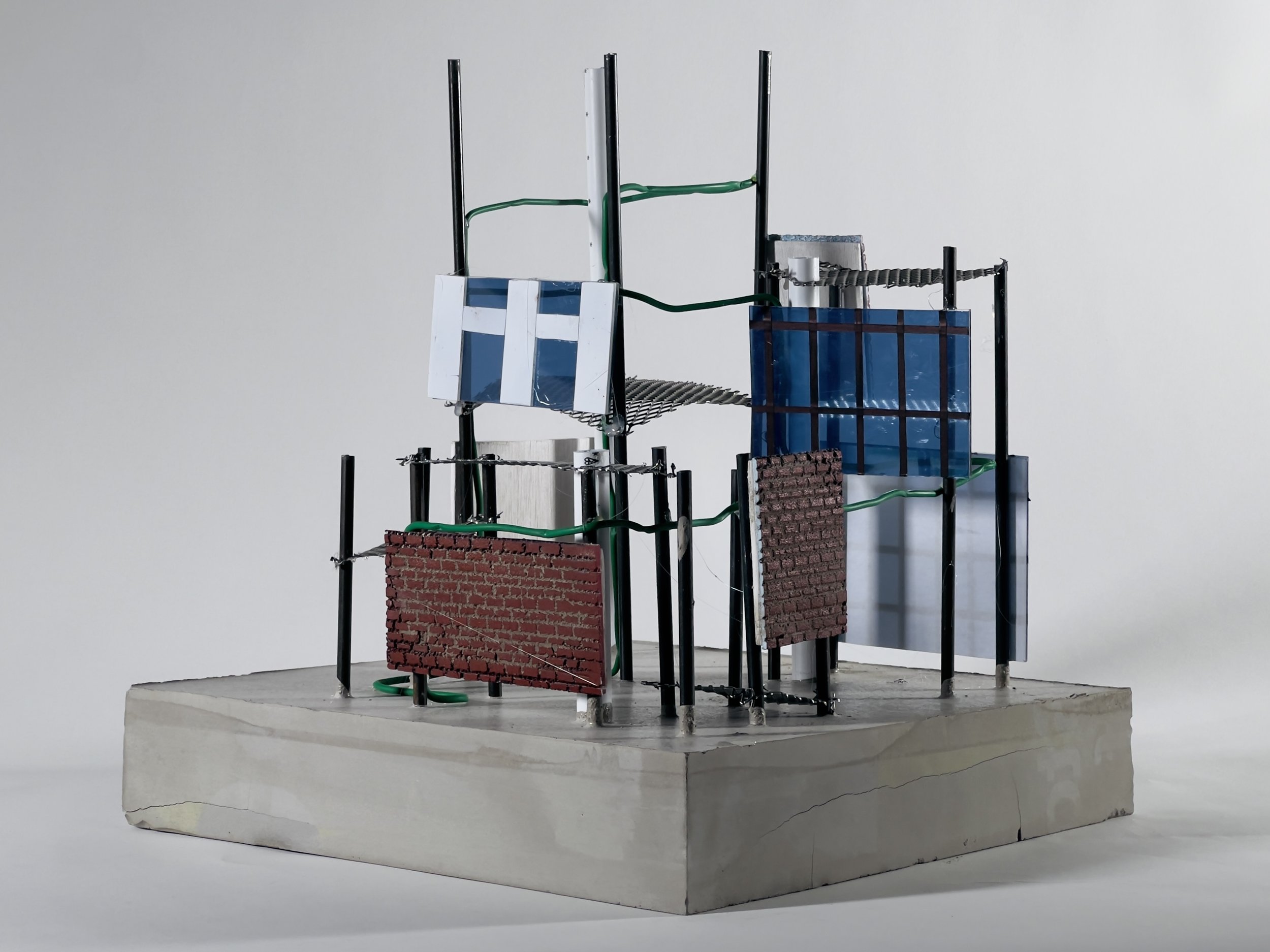Model Making: Calvino’s Armilla
[Brief]
This model making exercise aims to take inspiration from one of Italo Calvino’s ‘Invisible Cities’ - in this case Armilla - in order to question urban built environments through physical, 3D representation.
[Aims]
Armilla (one of Italo Calvino’s 55 ‘Imaginary Cities’) challenges our traditional understanding of what a city should be: imagining a city without walls or ceilings expands our understanding of what is possible in urban design and inspires us to push the boundaries of what we consider to be the essence of a city.
Imagining a city stripped to its bare bones allows one to start, or in this case continue a reflection on what is the essence of a city or a building. The question is: are facades part of the essence or plain cover-ups?
[Outcome]
A reflexion on the role on structures as opposed to facades in Architecture can be abstractly represented through model-making. Notably, this involves grounding the structure in a thick concrete slab to clearly establish we are talking about urban environments here. Steel and electrical utility connections are then made central to the model just like (while often hidden) they are in cities. Broken facade elements then aim to question the legitimacy of their frontal importance in buildings that, once stripped of their exterior shell, often all look the same.











